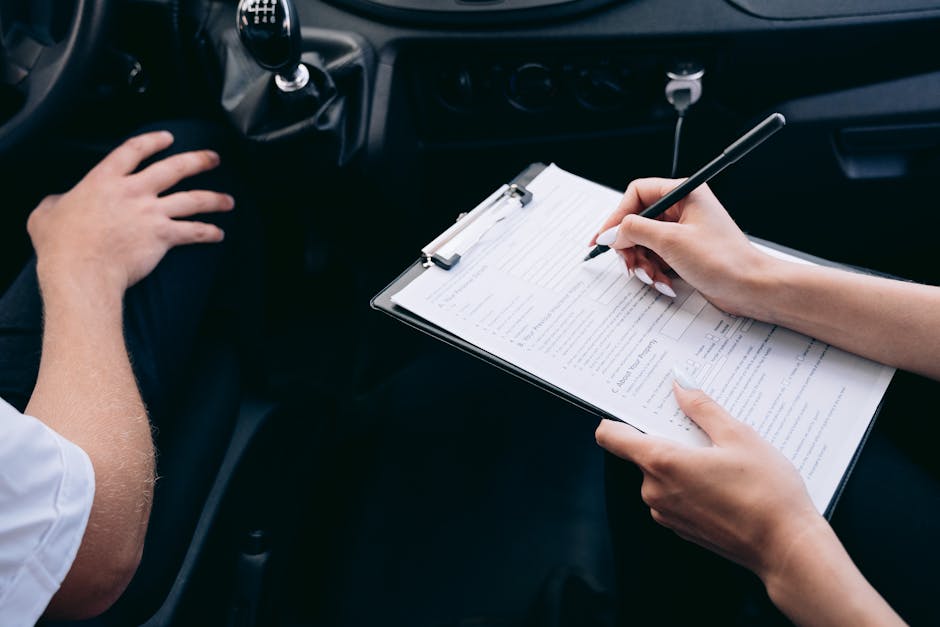Demystifying the Process: How to File a Car Insurance Claim
Accidents happen when we least expect them, and dealing with the aftermath can be overwhelming. From assessing the damage to coordinating repairs, the process can be stressful and confusing. One crucial aspect of handling a car accident is filing a car insurance claim. Knowing how to navigate this process efficiently can make a significant difference in getting the compensation you deserve.
In this comprehensive guide, we will delve into the intricacies of filing a car insurance claim. We will explore the steps involved, common pitfalls to avoid, and tips to streamline the process. Whether you are a seasoned driver or a novice on the roads, this article aims to empower you with the knowledge to navigate the complexities of filing a car insurance claim with confidence.
The Basics of Filing a Car Insurance Claim

When you find yourself in a car accident, filing a car insurance claim is the first step towards recovering your losses. Understanding the basics of this process is essential to ensure a smooth and successful claim. Here are the key steps involved in filing a car insurance claim:
1. Assess the Damage
Immediately after the accident, it is crucial to assess the damage to your vehicle. Take photos of the scene, the vehicles involved, and any visible damages. This documentation will be valuable when filing your insurance claim. If there are any injuries, seek medical attention promptly.
2. Exchange Information
Exchange information with the other parties involved in the accident, including their names, contact information, insurance details, and vehicle license plate numbers. This information will be necessary when filing your claim with the insurance company.
3. Contact Your Insurance Company
Notify your insurance company as soon as possible after the accident. Most insurance companies have a 24/7 claims hotline to report accidents. Be prepared to provide details about the accident, including the date, time, location, and the extent of the damages.
It is important to note that some insurance policies have specific time limits for reporting accidents, so prompt notification is essential to avoid any delays in processing your claim.
4. Provide Documentation
When filing your car insurance claim, you will need to provide documentation to support your case. This may include the police report, photos of the accident scene, repair estimates, medical bills (if applicable), and any other relevant information. Be thorough in documenting the details of the accident to strengthen your claim.
Understanding Coverage and Deductibles

Before filing a car insurance claim, it is essential to understand your coverage and deductibles. Different types of insurance coverage may apply depending on the circumstances of the accident. Here are some common types of coverage that may come into play:
1. Liability Coverage
Liability coverage pays for damages or injuries you cause to others in an accident. This coverage is typically required by law and does not cover damages to your vehicle.
2. Collision Coverage
Collision coverage pays for damages to your vehicle in an accident, regardless of fault. If you are at fault in an accident, your collision coverage will cover the cost of repairing or replacing your vehicle.
3. Comprehensive Coverage
Comprehensive coverage pays for damages to your vehicle that are not caused by a collision, such as theft, vandalism, or natural disasters. This coverage is optional but can provide added peace of mind.
Understanding your coverage and deductibles can help you make informed decisions when filing a car insurance claim. Be aware of any limitations or exclusions in your policy that may affect the outcome of your claim.
Steps to File a Car Insurance Claim

Now that you have a basic understanding of the process, let’s delve into the specific steps involved in filing a car insurance claim. Follow these guidelines to navigate the claims process effectively:
1. Review Your Policy
Before filing a claim, review your insurance policy to understand your coverage, deductibles, and any limitations that may apply. Familiarize yourself with the claims process outlined in your policy to ensure you follow the correct procedures.
2. Contact Your Insurance Company
Notify your insurance company as soon as possible after the accident. Provide them with all the necessary information, including the details of the accident, the parties involved, and any documentation you have gathered. Your insurance company will guide you through the next steps in the claims process.
3. Schedule an Inspection
Depending on the extent of the damages, your insurance company may arrange for an inspection of your vehicle to assess the repairs needed. Cooperate with the inspection process and provide access to your vehicle as requested.
4. Obtain Repair Estimates
Get repair estimates from reputable auto repair shops in your area. Your insurance company may provide a list of approved repair shops, but you are not obligated to use them. Compare estimates and choose a repair shop that meets your needs and budget.
5. Approval and Payment
Once the repairs have been approved by your insurance company, the repair process can begin. Depending on your policy, you may be required to pay a deductible towards the repairs. Your insurance company will cover the remaining costs up to the limits of your coverage.
Common Misconceptions About Filing a Car Insurance Claim

Despite the importance of filing a car insurance claim, there are several common misconceptions that can hinder the process. Here are some myths and misconceptions to be aware of when filing a car insurance claim:
1. “Filing a Claim Will Raise My Premiums”
Many drivers are hesitant to file a car insurance claim for fear of increased premiums. While filing a claim can affect your rates, the impact may vary depending on the circumstances of the accident and your driving history. In some cases, not filing a claim can be more costly in the long run.
2. “I Can’t File a Claim If I’m At Fault”
Even if you are at fault in an accident, you can still file a car insurance claim depending on your coverage. Liability coverage may cover damages to the other party, while collision coverage can help with repairs to your vehicle. Consult your insurance company to understand your options.
3. “I Have to Use My Insurance Company’s Repair Shop”
While your insurance company may recommend approved repair shops, you are not obligated to use them. You have the right to choose the repair shop of your choice. Be sure to select a reputable shop that meets your needs and provides quality service.
FAQs About Filing a Car Insurance Claim
Q: How long do I have to file a car insurance claim after an accident?
A: The time limit for filing a car insurance claim varies by insurance company and policy. It is best to notify your insurance company as soon as possible after the accident to avoid any delays in processing your claim.
Q: Will my insurance company cover a rental car while my vehicle is being repaired?
A: Some insurance policies include coverage for a rental car while your vehicle is being repaired. Check your policy or contact your insurance company to find out if rental car coverage is included.
Conclusion
To wrap things up, filing a car insurance claim can be a complex process, but with the right knowledge and preparation, you can navigate it effectively. Understanding your coverage, following the correct procedures, and being proactive in documenting the details of the accident are key to a successful claim.
Remember to review your policy, contact your insurance company promptly, and gather all the necessary documentation to support your claim. By following the steps outlined in this guide, you can approach the claims process with confidence and ensure a fair resolution to your accident.
Whether you are a seasoned driver or a novice on the roads, knowing how to file a car insurance claim is an essential skill that can save you time, money, and stress in the event of an accident. Stay informed, stay prepared, and drive safely.




